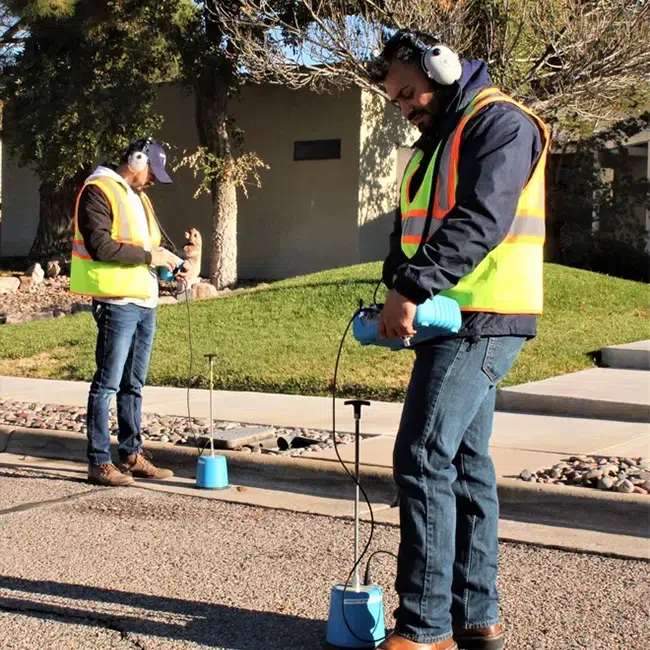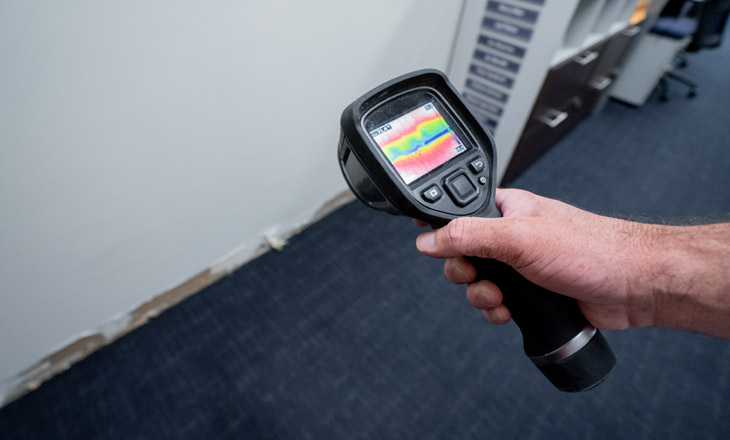Exactly How Professional Water Leak Detection Can Save You Cash and Prevent Damage
Wiki Article
Ingenious Solutions for Early Discovery of Water Leakages in Structures and Facilities
As the honesty of structures and infrastructure is paramount, the difficulty of early discovery of water leakages has spurred cutting-edge remedies that promise to change the method we safeguard against prospective problems. From innovative leak discovery innovations to the deployment of IoT sensing units for real-time surveillance, the landscape of leakage prevention is progressing swiftly. Maker knowing formulas use a glimpse into the future of leakage prediction, while thermal imaging offers a non-intrusive method for identifying hidden leakages. Automated water flow evaluation systems are improving exactly how leaks are recognized and addressed, leading the way for an aggressive technique to water leakage detection. Each of these remedies holds the crucial to ensuring the dependability and long life of our developed environment, prompting a change towards a more sustainable and reliable future.Advanced Leakage Detection Technologies
Advanced leakage detection technologies, outfitted with advanced sensing units and formulas, play an important role in quickly recognizing and identifying water leaks in different settings. Electro-magnetic sensing units can determine changes in electro-magnetic fields created by water, providing yet an additional layer of leakage detection capacity.
IoT Sensors for Real-Time Monitoring
In the realm of modern-day water leak discovery, the integration of IoT sensors for real-time tracking stands for a crucial development in boosting positive leakage discovery capacities. These sensors use continual tracking of water supply, offering real-time data on water flow prices, pressure variations, and temperature level adjustments. By leveraging IoT technology, these sensors can identify even the smallest abnormalities in water use patterns, enabling early recognition of possible leaks before they escalate right into major issues.IoT sensing units send information to a central system, where innovative formulas analyze the information and create signals or notifications when irregularities are discovered. This real-time monitoring ability permits homeowner or center managers to promptly deal with leakages, decreasing water damages, lowering repair work expenses, and saving water resources.
In addition, IoT sensing units can be integrated with building administration systems, permitting automatic reactions to spotted leaks, such as shutting down water valves or triggering pumps to minimize the impact of leakages. Generally, the implementation over at this website of IoT sensors for real-time surveillance dramatically boosts the performance and efficiency of water leakage discovery in buildings and infrastructure.
Artificial Intelligence Algorithms for Leak Forecast

One trick benefit of utilizing device learning for leakage prediction is its ability to continuously find out and boost its accuracy over time. As even more data is collected and fed right into the algorithm, it can refine its forecasts and adapt to transforming problems, eventually increasing the integrity of leak discovery systems.
Additionally, device learning formulas can help in identifying refined signs of leakages that may go undetected by typical tracking approaches. water leak detection. By evaluating intricate data embed in real-time, these algorithms can provide very early cautions and notifies, enabling prompt treatment and preventative maintenance to alleviate potential water damage and linked costs
Using Thermal Imaging for Leakage Detection
Thermal imaging technology provides an appealing strategy for identifying water leakages in numerous systems and frameworks. By utilizing infrared radiation and temperature variances, thermal imaging video cameras can determine hidden leakages that are not conveniently noticeable to the naked eye.One of the essential advantages of thermal imaging for leakage detection is its non-intrusive nature. Overall, the use of thermal imaging modern technology improves the performance and precision of water leak detection, making it a beneficial device for maintaining the honesty of buildings and infrastructures.
Automated Water Circulation Evaluation Solutions
How can computerized water circulation analysis systems change the discovery and management of leakages in various systems and frameworks? Automated water flow evaluation systems provide a proactive technique to leak discovery by constantly keeping track of water flow rates and patterns. By developing baseline data, these systems can rapidly recognize discrepancies that may show a leak, enabling punctual intervention to avoid substantial damage.These systems make use of sophisticated formulas to examine real-time data and offer immediate informs when anomalies are spotted, permitting speedy action to be taken. Additionally, automatic water circulation analysis systems can be incorporated with building monitoring systems or IoT platforms, boosting overall visit homepage effectiveness and making it possible for remote monitoring abilities.
In addition, the information collected by these systems can be used for anticipating upkeep objectives, aiding to identify possible powerlessness in the facilities before leaks occur. On the whole, the execution of automatic water circulation evaluation systems can dramatically boost leakage detection and management practices, ultimately causing set you back savings, lowered water waste, and raised sustainability in buildings and framework.

Conclusion
In conclusion, the combination of sophisticated leakage discovery innovations, IoT sensing units, maker understanding formulas, thermal imaging, and computerized water circulation evaluation systems supplies cutting-edge remedies for very early detection of water leaks in buildings and infrastructure. These technologies enable real-time monitoring, forecast of leakages, and effective detection techniques to stop water damage and wastage. Implementing these solutions can aid in keeping the honesty and sustainability of water supply in different settings.Report this wiki page